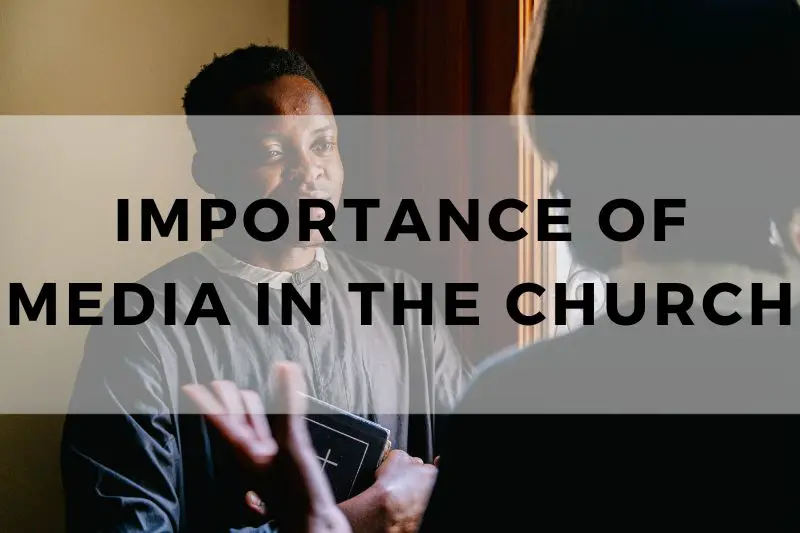
In today’s world, communication is key to the growth and vitality of any church. Media plays a crucial role in how churches connect with their congregation and the wider community. Through tools like social media, websites, and live streaming, churches can share their message effectively.
Media allows for faster, wider, and more dynamic communication. It bridges gaps, bringing the church closer to people. By utilizing modern media, churches can enhance outreach, foster engagement, and support their ministry. This article explores the importance of media in strengthening church communication and the benefits it brings.
The Importance of Media in Enhancing Church Communication
#1. Increases Reach and Accessibility
Media allows churches to reach people far beyond their local area. Live streaming, social media, and websites make church content accessible to anyone, anywhere. Those who can’t attend in person due to distance or physical limitations can still engage with services and events. Media also offers flexibility, allowing people to access content on their own time, increasing overall accessibility and inclusivity. This widespread access ensures that the church’s message is available to a much larger audience.
#2. Engages a Broader Audience
Media helps churches engage people from diverse backgrounds and locations. Through platforms like social media and podcasts, churches can connect with people who may never visit in person. This is especially effective for reaching younger audiences and individuals who prefer digital spaces. Media provides an opportunity to spread the message to new people and create meaningful connections online. It also encourages interaction and feedback, strengthening engagement.
#3. Improves Communication Efficiency
Media enhances communication by making it faster and more efficient. Churches can share updates, announcements, and event details instantly through social media, email, or apps. This ensures that information is always timely and reaches the intended audience. It also allows for targeted communication, so specific groups can receive relevant messages without delay. This efficiency ensures church members stay informed without the need for lengthy meetings or outdated communication methods.
#4. Fosters Community Building
Media strengthens community by enabling ongoing interaction among church members. Online platforms such as church apps or social media groups allow people to stay connected and support one another. This sense of digital fellowship helps maintain relationships and involvement, even when members can’t meet in person. It also fosters inclusivity for those new to the church. Additionally, it encourages collaboration on ministry initiatives, making everyone feel involved in church life.
#5. Enhances Visual Storytelling
Visual media makes church communication more engaging and memorable. Through videos, photos, and graphics, churches can tell their story in a powerful way. Visuals enhance sermons, showcase events, and highlight community outreach. They draw in the audience, making the message more relatable and emotionally impactful. This approach ensures that the church’s message sticks with the audience, encouraging them to reflect and take action.
#6. Attracts New Members
Media helps churches attract new members by increasing visibility. When people see church activities or hear inspiring messages online, they may feel compelled to visit. Platforms like social media and YouTube make it easier for visitors to experience the church before deciding to attend in person. Media content such as sermon highlights, testimonies, and event promotions can spark interest in people who may be seeking a church community. By showcasing the church’s values and offerings, media becomes an invitation for new members to connect and get involved.
#7. Supports Sermon Outreach
Media allows sermons to reach a wider audience and have a longer lifespan. Recording and sharing sermons online means that messages are not limited to the time of service. They can be viewed on demand by anyone, anywhere. Sermon videos or transcripts can also be shared across social media, extending their reach to people who might not attend in person. This increased exposure helps spread the church’s message and strengthens its impact beyond the physical space of the congregation.
#8. Promotes Transparency and Accountability
Media helps promote transparency within the church. By sharing updates, financial reports, and ministry activities online, churches can keep their congregation informed and engaged. This openness builds trust and shows the church’s commitment to accountability. Regular updates through media outlets allow members to see how resources are being used and how the church is fulfilling its mission. Transparency through media also encourages a sense of community ownership and involvement in church decisions and activities.
#9. Strengthens Ministry Partnerships
Media facilitates the strengthening of partnerships with other ministries, organizations, and community groups. By sharing collaborative events, joint projects, and ministry updates online, churches can highlight their partnerships and encourage support from their congregation. Social media and websites allow churches to showcase their work with others, drawing attention to shared goals and initiatives. This visibility can lead to new partnerships and opportunities for outreach, building a stronger network of ministries working together.
#10. Adapts to Changing Communication Trends
As communication trends evolve, media allows churches to stay relevant and adapt. The rise of mobile devices, podcasts, and social media platforms means that traditional methods may no longer be enough to reach younger or more tech-savvy audiences. By embracing media, churches ensure they are communicating in ways that align with current expectations and preferences. This adaptability allows the church to continue reaching people where they are, using the tools and methods that are most effective in the present age.
Closing Thoughts
Media is a powerful tool that enhances communication within the church. It expands reach, fosters engagement, and creates opportunities for deeper connections with the congregation and beyond. By embracing media, churches can stay relevant, attract new members, and support ministry efforts.
It’s no longer optional—it’s essential for effective outreach and community building. The church’s message can reach farther, faster, and more meaningfully through media. In today’s world, leveraging these tools is key to fulfilling the mission of spreading the gospel and nurturing a thriving, connected church family.
